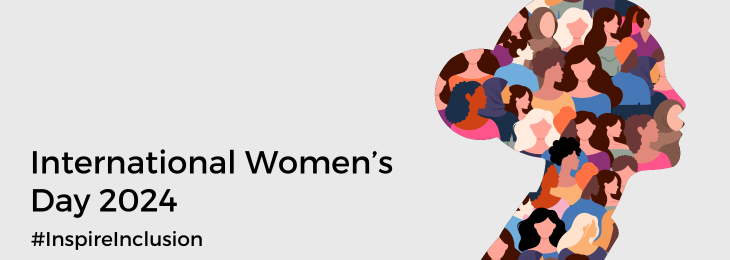
Why do al-Shabaab and other terrorist groups—foreign and domestic—increasingly look to crime to finance their activities?
It was a brutal and cold-blooded terrorist attack on an upscale shopping mall. The massacre of innocents was horrific. After four days of carnage, more than 60 people were killed and hundreds injured. The particularly chilling aspect of the September 2013 violence in Nairobi, Kenya is the realization that it could happen again and anywhere.
The terrorists were members of al-Shabaab, a militant Somali Islamic terrorist group with ties to al-Qaeda. In 2008, the U.S. State Department designated al-Shabaab as a foreign terrorist organization.1 Yet just a few weeks prior to the 2013 attack, Kenya designated al-Shabaab as an organized criminal group. At the time, Kenya’s attorney general described terrorism not as a war to be fought with troops but as criminal networks in the country.2
The dual terrorist and organized crime designations demonstrate that a symbiosis is developing between organized crime and terrorist organizations. The link has been observed around the world. For example:
- The Pakistani Taliban is engaged in a variety of local criminal activities such as extortion, kidnapping and trafficking in cigarettes to finance their activities including terror. Sharfuddin Memon, director of a Karachi citizens’ crime watch group, described the motivations behind this activity: “The world thinks this is about religion, but that’s a mistake. It’s about money and power. Faith has nothing to do with it.”3
- In Italy, Prosecutor Luigi Orsi acknowledged that after September 11, a number of high-profile cases against Arab businessmen and Islamic charities faded after initial fanfare. “I changed my vision of the problem,” he said. “It is almost impossible to concretely connect big businessmen, charities, diplomats, money masterminds to the ‘soldiers’ in the field. There are too many filters. So we have changed strategy. The focus now is the street level.”4
- In the U.S., police authorities have observed for years how local crime has helped finance terrorist activities. For example, both the 1993 attack on the World Trade Center and the 1995 bombing of the Alfred P. Murrah Federal Building in Oklahoma City were financed in part by local crime.
Since the end of the Cold War, there has been a dramatic decline in the number of countries that support and finance targeted acts of terrorism in order to achieve their national objectives. Today, only Iran continues to provide active financial and material support to terrorist groups around the world.
Other traditional paradigms have changed. For example, prior to the September 11 terrorist attacks, al-Qaeda reportedly received most of its financial resources from Osama bin Laden’s personal wealth, along with contributions from wealthy Saudi and other Gulf donors. In addition, the organization itself was centrally located, administered, directed and financed. Yet al-Qaeda and other jihadist groups have been forced to disperse when the U.S. and coalition partners destroyed their base of operations in Afghanistan. Today, their operational cells and affiliate organizations, including al-Shabaab, receive little centralized direction or funding.
Given the decline of the historical model—that is, groups with centralized command and control receiving most of their money from “state sponsors,” evil regimes, and wealthy donors— terrorists and their supporters must increasingly rely on self-finance. In many cases, this means turning to local crime and transnational criminal networks.5
For example, al-Shabaab and radical Somali warlords have earned tens of millions of dollars a year from illicit exports of charcoal to the Gulf States. Other money comes from trafficking in poached ivory, trading in khat (a local narcotic), and informal taxes or extortion on small businesses in Somalia operating under areas controlled by al-Shabaab. However, a substantial portion of funding originates from the worldwide Somali diaspora—including radical elements engaged in a variety of criminal activity in the U.S.
Initial reports that some Americans were among the attackers in Nairobi were not proved. However, according to a count by the New America Foundation, 22 primarily Somali-American residents of Minnesota alone have funded or fought with al-Shabaab over the last few years. Supporters of al-Shabaab have also been found in diverse American locales such as Seattle, St. Louis, San Diego, Minnesota, Maryland, Ohio and Alabama.6
Fraud has long been a favorite of organized criminal groups in the U.S. and around the world. The nexus between fraud and terrorism is undisputed.7 Fraud is a very broad topic, and manifests in many ways. Some of the most applicable types of fraud related to this topic include:
- Immigration fraud
- Identify theft/fraud
- Intellectual property rights violations
- Trafficking in counterfeit cigarettes
- Defrauding government social programs
- False invoicing
- Credit card fraud and skimming
- Online fraud
- Mortgage fraud
- Medicare and healthcare fraud
- Charitable fraud
- Fraudulent insurance claims, staged crashes, etc.
In the U.S., experience has shown that most fraud gangs are ethnic-based.8 They are Vietnamese, Chinese, Jamaican, Russian, Armenian, and Nigerian, groups from the Middle East, South Asia, varied Spanish-speaking countries, and many others.
It is important to emphasize that the overwhelming majority of immigrants in the U.S. are law abiding. Also, most immigrants successfully assimilate; yet many confront cultural, linguistic and religious obstacles. Some harbor resentments and others seek to cash in on societal largess. Law enforcement officials have repeatedly seen first or second generation young immigrants turn to a life of gangs and crime. Although many gravitate toward trafficking in narcotics and organized theft, increasingly it appears the crime of choice is fraud. There are various types of financial scams that have proven very lucrative and have far less risk than trafficking in drugs.
Some suspect networks have links with terrorist organizations. According to a report for the National Defense Authorization Act for fiscal year 2014, “The committee believes that criminal cartel organizations are hosting themselves in U.S. cities and may be teaming with terrorists also embedded in the U.S. to fund terror networks overseas. These networks provide sustained and substantial funding to pay operatives, support families, purchase and traffic weapons, indoctrinate and recruit new members, train, travel, and bribe officials and also perpetrate billions of dollars’ worth of fraud against banks, businesses and governments.”9
Organized crime is a very broad term. Over the years it has come to include cartels and gangs. Some groups are large and complex, and others operate within small cells. From a law enforcement perspective, they are almost always insular, ethnic and very difficult to penetrate. Some are domestic in scope and others have tentacles that reach around the world. In Italy, organized crime is sometimes called la piovra or “the octopus.”
In addition to criminal activity, many groups including al-Shabaab sympathizers in the U.S. also use underground financial systems to remit funds overseas. Here again, the overwhelming percentage of immigrants use these low-cost underground financial systems to send hard-earned money back to their home country to support loved ones. Law enforcement has no wish to interfere with this type of activity. However, because these “alternative” remittance systems are non-transparent and generally avoid government scrutiny including financial intelligence reporting requirements, they are also used by both criminal and terrorist organizations.
For example, in November 2013, a federal judge in San Diego sentenced three Somali immigrants for providing financial support to al-Shabaab.10 Evidence presented during the trial showed the defendants conspired to transfer funds to Somalia through a now non-operational hawala known as the Shidaal Express.
Hawala in the U.S. is classified as a “money services business” or MSB. So, hawala is legal but as MSB practitioners, they must register with the Treasury’s Financial Crimes Enforcement Network (FinCEN). MSBs must also be licensed in approximately 46 of the 50 states.11 Hawaladars must also report suspicious financial activity to FinCEN. Unfortunately, the underground, ethnic-based, opaque financial operations seldom comply with the law.
Knowledge of underground financial systems such as hawala is important to investigators both in government and industry. Many successfully investigate fraudulent activity but are stymied in following the proceeds of the crime that are often sent outside of the country.
Given the above, "draining the swamp" or cracking down at home and abroad on local and transnational financial crime might eventually become one of the most effective strategies to combat terrorism. For this strategy to succeed, law enforcement, intelligence and military overseas and even commercial investigators and analysts should look beyond the immediate circumstances of a given local crime. They must learn to "ask the next question" during the course of routine investigations. For instance, “Where is the money going?”
Yet most investigators—public and private—often get caught up in the quick statistic or the quick fix. That is how they are recognized and rewarded. They are not interested, often times not allowed, generally do not have the training and expertise, nor have the networks to determine if the local crime they uncovered has broader implications.
The lack of awareness is often coupled with not understanding terrorists’ link to fraud schemes. According to Frank Perri, who has written extensively about the fraud/terror nexus, “Fraud analysis must be central, not peripheral, in understanding the patterns of terrorist behavior.”12
Our adversaries—here and abroad—know that they need money to survive and fund their operations. They are proving adept and creative at finding new ways to access this lifeblood, including new forms of fraudulent activity.
Fortunately, over the last few years, there have been tremendous advances in the amount of data collected and sophisticated analytical tools to help fraud investigators.
Just a few examples of helpful data sets include financial, trade, transport and travel. A myriad of business data exists. Communications and social media are growing exponentially. Industry calls these massive data bases, “big data." Concurrently, there have been major advances in data mining and advanced analytical capabilities that can help organizations derive the “intelligence” from this vast amount of data. Data warehousing and retrieval are enhanced by cutting edge technologies that search, mine, analyze, link and detect anomalies, suspicious behaviors and related or interconnected activities and people. Fraud frameworks can be deployed to help government agencies and departments, as well as industry, detect suspicious activity using scoring engines that can rate, with high degrees of statistical accuracy, behaviors that warrant further investigation while generating alerts when something of importance changes.
Predictive analytics use elements involved in a successful case or investigation and overlay these elements on other data sets to detect previously unknown behaviors or activities, enhancing and expanding an investigator’s knowledge, efforts and production while more effectively deploying resources. Social network analytics helps investigators detect and prevent criminal activity by going beyond individual transactions to analyze all related activities in various mediums and networks uncovering previously unknown relationships. Visual analytics helps investigators analyze massive amounts of data very quickly. It enables users to spot patterns, identify opportunities for further analysis and convey visual results via Web reports or the iPad.
Moreover, it is now possible to engineer "red-flag indicators" in financial reports—both within the government and in commercial enterprises that file the information—that will identify likely suspect fraudulent methodologies or hawala.13
In summary and going forward, our primary countermeasures should be: 1) awareness of the growing symbiotic relationship between organized criminal groups, terror and fraud; 2) a renewed emphasis on “following the money” trails in all of their varied forms; 3) increased communication between government and industry; and 4) data and analytics as force multipliers. We must do a better job of using new analytical tools to proactively connect the dots and thwart fraudulent activity.
- “Designation of al-Shabaab as a Foreign Terrorist Organization,” U.S. Department of State, February 26, 2008; available online: http://www.state.gov/j/ct/rls/other/des/102446.htm
- Jim Kouri, “Al-Shabaab Designated as an Organized Crime Group by Kenyan Government,” Law Enforcement Examiner, August 31, 2013; available online: http://www.examiner.com/article/al-shabaab-designated-as-organized-crime-group-by-kenyan-government
- Sabrina Tavernise, “Organized Crime in Pakistan Feeds Taliban,” New York Times, August 28, 2009; available online: http://www.nytimes.com/2009/08/29/world/asia/29karachi.html?pagewanted=all&_r=0
- Sebastian Rotella, “Street Level Crime Tied to Terrorist Funding,” Los Angeles Times, April 3, 2007; available online: http://seattletimes.com/html/nationworld/2003648495_terrorfund03.html
- John Cassara and Avi Jorisch, On the Trail of Terror Finance: What Law Enforcement and Intelligence Officers Need to Know,” Chapter 9: Crime in Support of Terrorism, pp. 159 – 176, 2010 Red Cell Publishing, Washington, D.C.
- Peter Bergen, “Al-Shabaab’s American Allies,” CNN, September 2, 2013; available online: http://www.cnn.com/2013/09/23/opinion/bergen-al-shabaab-american-ties/
- Frank S. Perri, “The Fraud Terror Link – Terrorists are Committing Fraud to Fund Their Activities,” Fraud Magazine, July-August 2010; available online: http://www.fraud-magazine.com/article.aspx?id=4294967888
- Dennis Jay, “Organized, Criminal Empires Target Insurers,” July 10, 2012, PropertyCasualty360; available online: http://www.propertycasualty360.com/2012/07/10/organized-violent-criminal-empires-target-insurers
- “Plot to Counter Brokers of Transnational Criminal Organizations,” Committee Reports 113th Congress, House Report 113-102, Library of Congress; available online: http://thomas.loc.gov/cgi-bin/cpquery/?&sid=cp113sJKdk&r_n=hr102.113&dbname=cp113&&sel=TOC_758795&
- “Three Somali Immigrants Sentenced for Providing Support to Foreign Terrorists,” U.S. Attorney’s Office, Southern District of California, November 18, 2013; available online: http://www.fbi.gov/sandiego/press-releases/2013/three-somali-immigrants-sentenced-for-providing-support-to-foreign-terrorists
- Cassara and Jorisch, p. 130.
- Perri
- John Cassara, “Terrorist Financing Since 9/11: Assessing the Evolution of al Qaeda and State Sponsors of Terror,” Testimony Before the House Homeland Subcommittee on Counterterrorism and Intelligence, May 18, 2012; available online: http://homeland.house.gov/sites/homeland.house.gov/files/Testimony%20-%20Cassara.pdf










